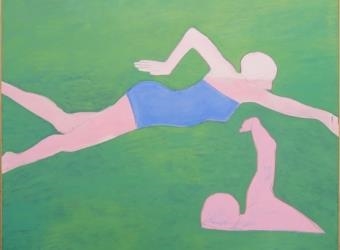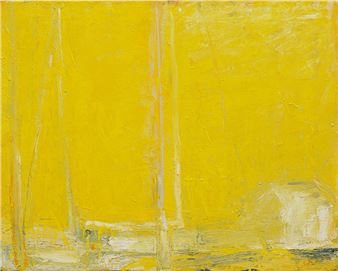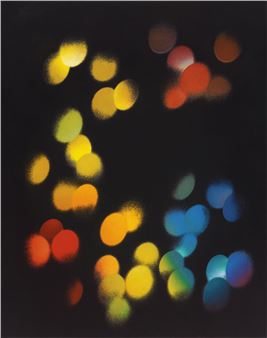Joan Brown
The George Adams Gallery begins the fall season with an exhibition of paintings by Joan Brown (1938-1990). Covering the years 1961 to 1983, this is a wide-ranging presentation including several large canvases from the 70s and 80s and a series of early enamel on paper paintings. With much of this material having been rarely, if ever, shown, the emphasis is on the lesser-known aspects of Brown’s work.
Joan Brown was an astonishingly prolific artist with a successful career spanning some 30 plus years, up to her tragic death in India in 1990. Both highly individualistic and independent-minded, her work went through a series of dramatic and deeply personal evolutions over the course of her life. As an artist but also as a traveler and student, her views were shaped by an increasingly pluralistic embrace of world cultures and a spirituality which came to pervade her life and work. Though she respected and was inspired by painters such as Goya and Rembrandt, or more modern artists such as Rousseau and Bacon, Brown’s embrace of Eastern philosophies was of equal importance, in particular the teachings of the guru Sathya Sai Baba, of whom she became a devoted follower.
The exhibition begins with a group of enamel on paper paintings made during a trip to Spain in the summer of 1961, what was the first of many trips abroad for Brown. Loose and decadent, they read like a travelogue, documenting the sights in the same brushy strokes of her abstractions at the time. However, unlike those early paintings, these works on paper simply capture the people and places surrounding her, an approach more typical of her mature work. Similarly, her 1963 depiction of her young son in “Noel’s First Christmas” augments the extensive diaries she kept of his early years and is a richly colored and affectionate portrait.

Recommended for you
The George Adams Gallery begins the fall season with an exhibition of paintings by Joan Brown (1938-1990). Covering the years 1961 to 1983, this is a wide-ranging presentation including several large canvases from the 70s and 80s and a series of early enamel on paper paintings. With much of this material having been rarely, if ever, shown, the emphasis is on the lesser-known aspects of Brown’s work.
Joan Brown was an astonishingly prolific artist with a successful career spanning some 30 plus years, up to her tragic death in India in 1990. Both highly individualistic and independent-minded, her work went through a series of dramatic and deeply personal evolutions over the course of her life. As an artist but also as a traveler and student, her views were shaped by an increasingly pluralistic embrace of world cultures and a spirituality which came to pervade her life and work. Though she respected and was inspired by painters such as Goya and Rembrandt, or more modern artists such as Rousseau and Bacon, Brown’s embrace of Eastern philosophies was of equal importance, in particular the teachings of the guru Sathya Sai Baba, of whom she became a devoted follower.
The exhibition begins with a group of enamel on paper paintings made during a trip to Spain in the summer of 1961, what was the first of many trips abroad for Brown. Loose and decadent, they read like a travelogue, documenting the sights in the same brushy strokes of her abstractions at the time. However, unlike those early paintings, these works on paper simply capture the people and places surrounding her, an approach more typical of her mature work. Similarly, her 1963 depiction of her young son in “Noel’s First Christmas” augments the extensive diaries she kept of his early years and is a richly colored and affectionate portrait.

 ARTISTS
ARTISTS













